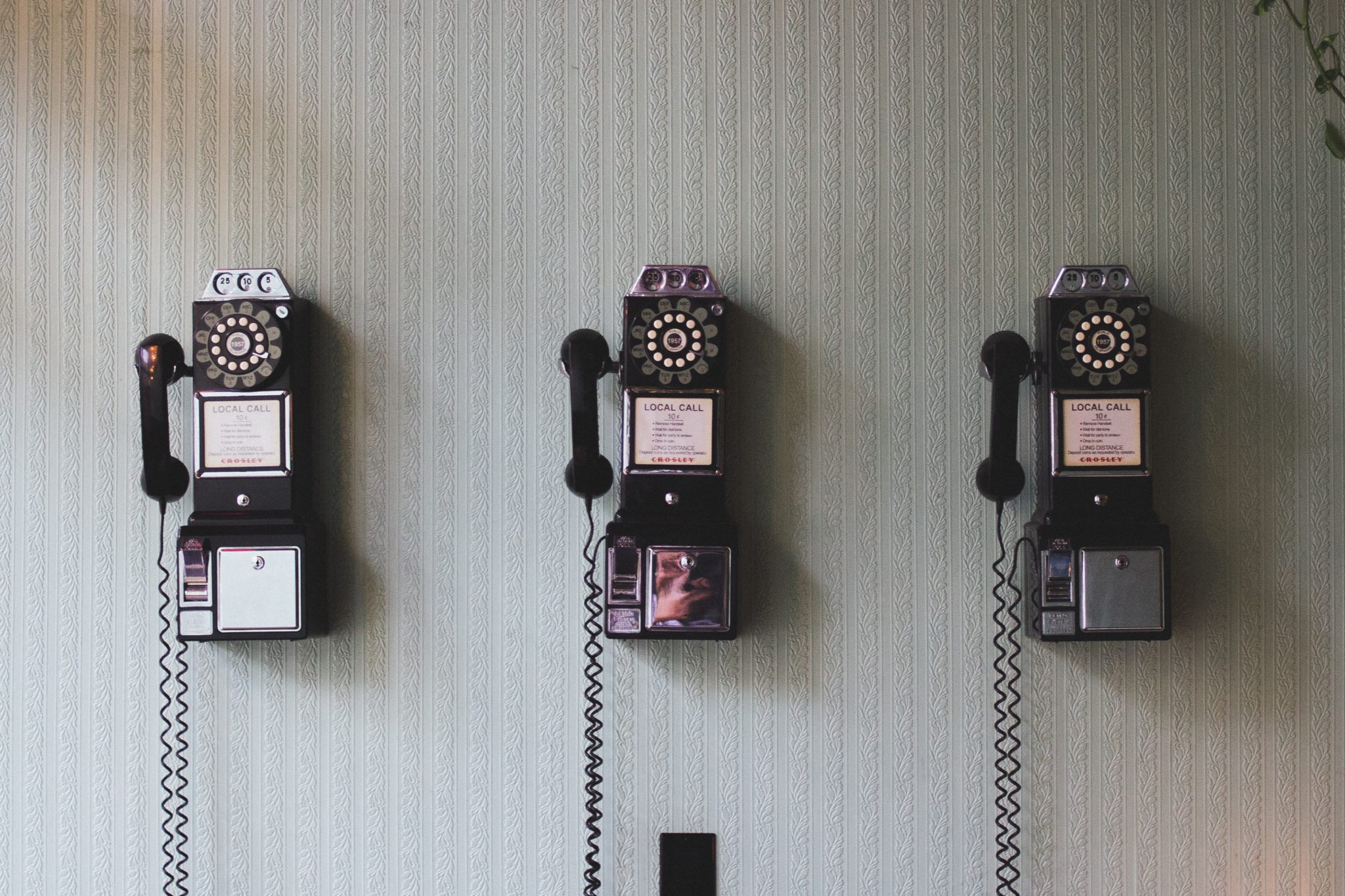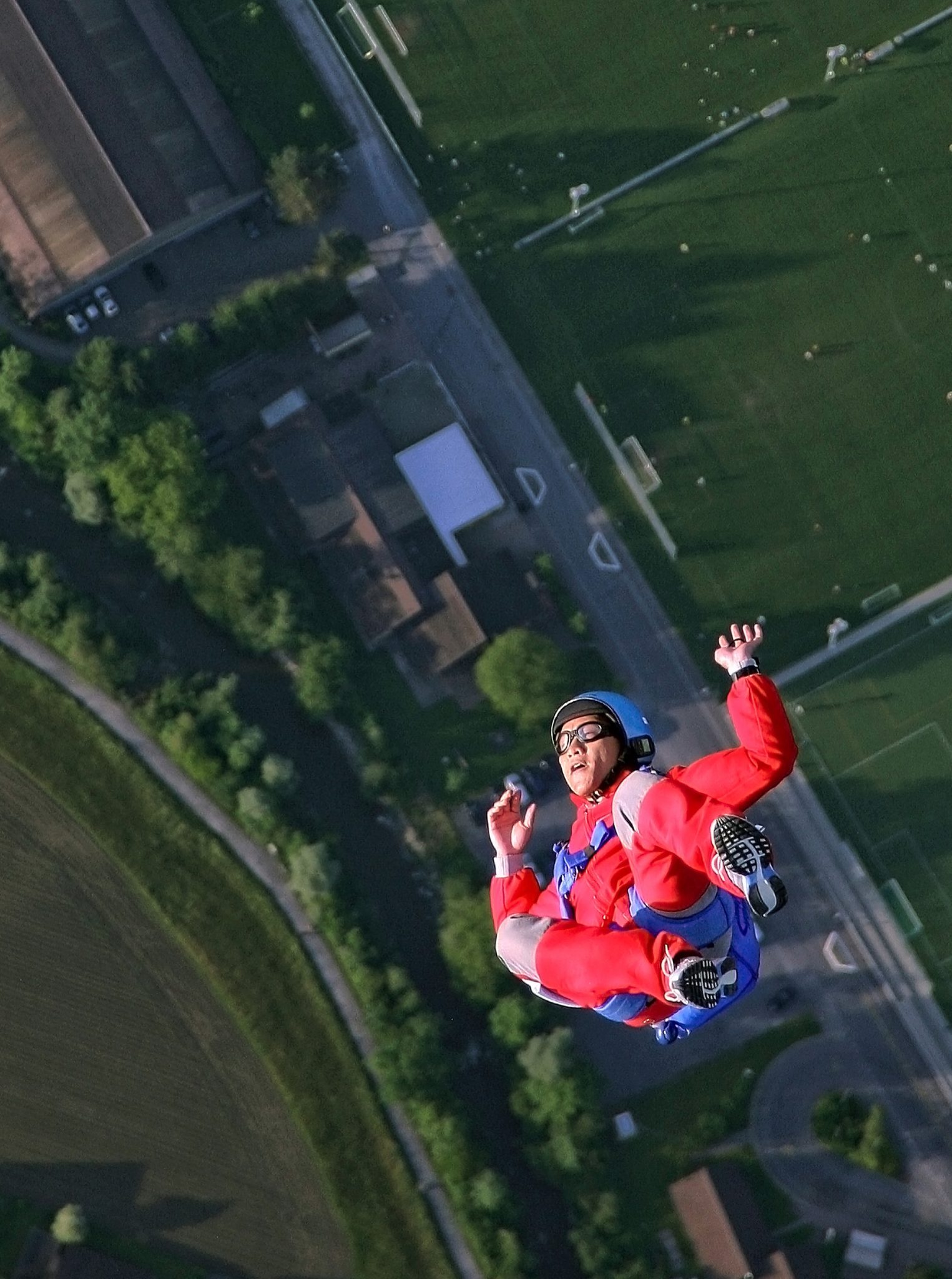Camp might last a few months every year, but if your camp is a non-profit, fundraising is a year-round job. To fundraise for your summer camp, follow the tips below.
For many in the non-profit summer camp industry, raising money is one of those necessary, but not necessarily fun, parts of the job. If you’re like most of us, asking for money is on the bottom of your ‘most fun things to do’ list. Or at the top of your ‘least fun things to do’ list. Either way, it can be tough to fundraise for your summer camp.
When it comes to fundraising, though, summer camps have a huge advantage: Vast networks of families, staff and alumni who are super loyal and believe in the camp’s mission. They’re already on your side! And if you ask for their help in a compelling way, most are happy to lend a hand or donate to keep you doing what you love most – running an amazing camp.
So how can you get started? In today’s article, we’ve outlined 5 ways to help you effectively reach out to your networks. Half the battle is using the right tools. The other half is being consistent. And the third half is never forgetting that relationships are key. While that makes three halves, we’re going to somehow say that in this case, three halves make the whole. We weren’t math majors, so it’s OK.

1. Harness the Power of Email to Fundraise for Your Summer Camp
Email is a lot of things: It’s convenient and efficient, it’s cost-effective, and when properly utilized, it can consistently provide results to your campaign. And really, there’s nothing quite like sending out hundreds of personalized donation requests with the click of a button.
But email does have certain nuances that can sink or swim your campaign. When you send an email, you’re competing with hundreds of inbox notifications.
That means your email ask needs to appeal to your campers’ parents on an emotional level before anything else. What impact did you have on their child, or on children in general? *Do not gloss over this – hit it, main-vein.* Once you’ve covered that base, flank it with appealing to logic (ie, donating is a tax write-off!) and credibility (look who else has donated/partnered with us!). Finally, try to make your appeal straightforward, to the point, and in line with your branding. Once you’ve squared up with the three points above, here are some tips to actually get moving with how to fundraise for your summer camp.
Want More Donations? Track Your Users’ Activity
Did you know it’s possible to track if users open an email you send? You can also track how many times they opened it, when, what they clicked on, and much more. This is old news; what’s even better is using a marketing automation tool like HubSpot, where you can also track which pages they visited on your site and when. Why is this important?
When you send a fundraising email out – just like any standard sales email in the business world – you’re trying to gauge people’s interest in partnering with you, and ultimately provide them a friction-free path to do so. Some people will just give. Others will happily give, but you might need to put in a little more digital footwork to reel them in to fundraise for your summer camp.
For example, if you’ve sent two emails that a given user has clicked on and forwarded, and you can see that they’ve visited your donation page over three times, but they haven’t contributed yet, you should reach out to them again with a customized email or even a phone call to help close the loop. Marketing automation tools can make this process seamless, or you can have as much control as you want.
Segment Your Contact List
It might be tempting to blanket your entire contact list with the same email. But this is a big no-no.
Here’s the reason why: Each donor relates to your camp in his or her own unique way. When you tailor messages to reflect those relationships, your emails become more meaningful instantly.
For example, for parents of current campers, you’d want to tailor the message to what matters to them, i.e. facilities upgrades or improved programming. For former donors, you might want to start with a thank you for previous contributions and highlight how their ongoing support is absolutely vital to your mission.
‘Personalize’ Every Email
Email can quickly become impersonal – but you can avoid generic, ho-hum emails with a few tricks.
It starts with segmenting. For instance, you could create three email variations for current parents, former donors, and alumni – each with a personalized message that speaks to each audience.
But since you can’t spend eons copy-paste sending to each person and demographic, you’ll also want to use email distribution tools that automate personalization. Tools like MailChimp, Constant Contact or Emma take a first name or title/last name combo and add it to each and every email you send – i.e. your emails would start with Dear Nancy or Dear Ms. Smith.
This little touch instantly adds a touch more credibility to your campaign (but make sure you have names for each person, or it becomes impersonal very quickly).
Write a Subject Line that Hooks
A curiosity-sparking, enticing subject line maximizes your email’s open-rate. But you’re not a pro copywriter, so what can you do?
For starters, be specific and honest. Tell your audience that you’re raising money and why you’re asking for donations.
This cues them to the point of the email. Plus, it helps you differentiate your fundraising emails from general camp updates.
*Pro tip: If you use MailChimp, they actually have a subject line tool that gives you an idea of how likely your recipients are to open the email with your chosen subject line.
Value Their Time
Your email should be brief – about 2-3 short paragraphs at most.
Your audience is busy. So get straight to the point: Emotional appeal for what camp has meant to them and their camper. Then flank it with logic (tax write-off, for example) and credibility (social proof). End with a Call-To-Action (CTA). If you have specific campaigns (matching campaigns, or an end of the year campaign), highlight them as part of the email. People love joining others in a big cause with a specific goal. Also, do not assume that sending one email will do the trick. No piece of content (such as email) should stand alone. If nothing else, as a rule of thumb set up a drip of three emails that will go out as part of the campaign.
Use Templates & Distribution Tools
Make your emails look professional and branded with an email template. MailChimp and Emma, for example, are tools that enable you to design your own or use pre-programmed templates. In other words, you select a template (or design the look), plug in your content, and the email’s ready to send.
Plus, the majority of email design tools make it easy to mass distribute your message to lists of contacts. In other words, you can literally send out your emails to your entire audience with one click.

2. Open Up the Phone Lines
Compared to email, asking for donations by phone adds a personal touch and – frankly – can be much more effective if you have the ability to do this. Phone calls allow you to give your campaign a real, live voice. They let you connect with your camp community.
But phone calls can be nerve-wrecking and challenge. For instance, if you’re not framing your calls correctly, you might have trouble getting your audience to stay on the line. Here are a few tips you can use for better phone fundraising:
Ask Your Team for Help
You might have hundreds of phone calls to make. And if you have a small team, that can be quite the challenge. Here’s a solution: Bring volunteers on board who have strong connections to your organization.
Volunteers show donors the impact their contributions can have. Plus, they’ll allow you to cover more ground in a shorter amount of time.
Just make sure you’re giving volunteers the right information. Use your camp software to share detailed contact profiles. Knowing that a prospect is a former donor or alumni can help start the conversation.
SMILE. And Frame Your Ask in a Compelling Way
It’s easy for your phone calls to start sounding rote after an hour or two on the lines. Here’s what you don’t want to do: Dial and bluntly ask for donations. That can quickly derail your efforts, not to mention create a less-than-stellar reputation for your camp. On that note, do not use a service to make these calls for you. Big no-no.
Instead, make sure you cover the reasons you’re raising funds and the solutions your summer camp has for those problems. Once you’ve done that, you can highlight how donations will help you reach your goals.
And before anything else, make sure you give yourself and your team the license to express their passion for camp through these calls. People buy passion, plain and simple. This is a great way to roll open the doors to fundraise for your summer camp.
And they can tell if you’re smiling by the way you talk, so if nothing else, put on a smile before you say hello.
Stick to a Script (Generally)
A loose telephone script can be a wonderful tool. It will ensure your campaign communications are generally consistent. A few tips:
- Take time to build rapport: More than anything else, camp is about relationships. While a sript is helpful, don’t forget what’s at the heart of everything you’re doing – connecting with people in meaningful ways. It’s why you run a camp, after all.
- Personalize your scripts: Your scripts should be tailored to each segment.
- Keep the call short: Don’t go overboard. Try to script your calls like natural conversation and keep them to-the-point.
- Don’t be afraid to ad-lib: You’ll likely know many of your contacts, so don’t feel forced to stick to the script. If a conversation blossoms, there’s no reason to run it off course.
![]()
3. Make the Ask Face-to-Face
Sure, social media, email and phone calls are the most convenient way to connect. But they’ll never match the connection you make when you meet donors face-to-face.
**If you have major donors, consider connecting with them directly, face-to-face if possible, before you send out mass campaigns. Give them the attention they deserve, and remind them how valuable they are to your camp with individual attention.**
In general, personal meetings can work wonders for your campaign; there’s no substitute for connecting on a personal level. Yet, unlike the other ways to ask for donations, in-person requests require more preparation and time. Below are a few ideas for creating chances to connect with donors face to face.
Host Events Regularly
Camp events – from galas to BBQ’s to alumni events and community car washes – give you a chance to talk with donors both individually and en masse. Whereas you may not be able to talk individually with everyone, creating more relationships with people makes the world go ’round, and you’ll eventually see it in your top line revenue. If you’re not doing at least some sort of events to engage your people outside of camp season, you could be missing a big piece of the puzzle.
Research Your Donors
Your camp likely has hundreds of donors each year, and it would be nearly impossible to meet each individual in-person. Instead, research your donor database and segment prospects who would be ideal for an in-person meeting – i.e. multi-year families, people who have made significant contributions in the past, or people who have shown interest in volunteering for your camp even if they haven’t given significantly before.
Before you reach out, ask for an introduction if you don’t have a relationship with them, or at the very least use LinkedIn or other online tools to find out a bit more about the person you’re connecting with before a cold outreach.
Reach Out, Consistently
It may go without saying, but we need to say it: throw caution to the wind and actually reach out to folks. The more you do it, the better you’ll get, and it’s all about building strong relationships. So take advantage of all forms of communication – reach out via email and phone first. Keep them on your camp newsletter mailing list. Invite them to general camp events. Go get coffee and talk about the kids if you have time. This will make opening the conversation to fundraise for your summer camp more easily.
And, ideally, track all those points of communication in your CRM so you can look up in a glance their history with your organization.
Chances are, you’ll be doing this with the majority of your donors already – but consistent outreach is especially critical for people you plan to meet in person.

4. Get Social With It
Social media isn’t just for sharing photos and camp memes (although you’ll still want to be doing plenty of that). Lately, social media sites – and Facebook in particular — have become excellent mediums for requesting donations from your audiences.
So how can you get your Facebook followers excited to give and spread the word? Back up a step or two and start by building out your page if you haven’t yet, and regularly posting content. To be frank, the last thing you want to do is fill up your feed with a constant stream of donation requests.
Build Your Facebook Page
Your camp’s social media presence can make or break a social giving campaign. For one, your page needs to look credible – if not, you shouldn’t bother asking. So make sure it’s all filled out – contact details, an “About” section, and all other relevant info.
Then, make sure you’re providing consistent, engaging content. Photos from camp, updates about activities, links to your newsletter, camp videos, camp news, etc. – you want your audience to be engaged with what you’re posting. And use your voice; this doesn’t need to all be polished to a ‘T’.
Add the ‘Donation’ Tab on Facebook
Facebook allows camps and other nonprofits to add the “Donate Social” app to their pages. This allows your followers to donate quickly and easily via PayPal or a credit card, and they can also invite friends to donate and share.
Once you’ve added the tab, it’s all about letting your audience know how to use it. Launch your campaign. Inform people why you’re raising money with pictures and interesting content, and then direct your audience to the Donate tab.
Use Facebook to Increase Awareness
Another great thing about the “Donate” tab on Facebook: your audience can invite their friends. Making your campaign social can instantly maximize awareness and make your fundraising more visible.
So add a link to your Facebook page in all of your fundraising communications – email, newsletters – and encourage your audience to share.

5. Release the Snails! And Send Letters That Resonate
Snail mail? Are nonprofits still using letters for fundraising? The short answer is YES. Letters – although old school – still remain relevant for summer camp fundraisers.
Letters are personal, increase awareness, and – really – what could remind you more of camp than receiving a letter in the mail? But you can’t just whip up a letter and expect it to be effective. There’s an ideal way to write a donation request letter to make it stand out and excite potential donors.
Write a Compelling Letter
Copywriting 101: Use a bold headline to draw readers in and tell a story that jumps off the page. Sure, that’s easier said than done, but if you follow these two steps, you’ll ensure your letter actually gets read.
- The Headline: This is the first thing readers will see, and it’s got to reel them in on an emotional level. So make sure you’re drawing them in with a specific, attention-grabbing hook.
- Personalize the Letter: Just like with emails, your letters should be personalized. Use first names, write a unique letter for each audience segment if you can, i.e. donors, volunteers, camp parents, etc, and ask sincerely. Handwrite to your major donors above a certain threshhold.
- Call to Action: Guide them directly to the vehicle they can give. Include a giving form and return envelope, or easily visible link to your donate page on your site.
Follow Up with Thank You’s
Just like your mom made you do after your birthday – say thanks. Letters of thanks or thank you cards after a donation can be powerful tools for donor retention. These can be automated to an extent to minimize your time, but don’t include your major donors in this bucket. As always, lavish them with attention and follow up with handwritten notes and a phone call.
 Summer Camp Fundraising Made Simple
Summer Camp Fundraising Made Simple
To the uninitiated, sometimes jumping into the world of fundraising – of literally asking people for money – can feel like jumping out of a plane. Or like the time you asked Dad for $20 to go to the movies and he told you to go mow the lawn. But take it from us, your parachute will come out. No one will make you mow their lawn.
And the more you do it, the easier it will become. Just remember – start simple, and get to know your donors. It is, after all, all about relationships – just like in any other arena of life.
